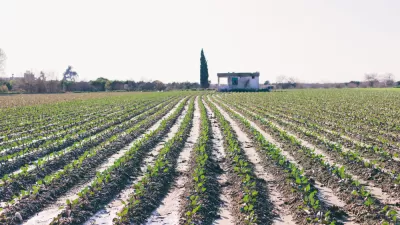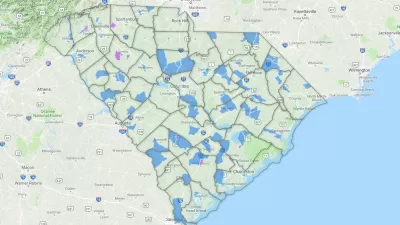The new Opportunity Zones program is one to watch as states around the country throw their hats in the ring.

Ohio Governor John Kasich has announced several opportunity zones in the state—the designation makes those parts of the states eligible for a new federal program aimed at increasing investment in low-income and under-served neighborhoods.
The Opportunity Zones program creates Qualified Investment Funds, which generates funding by attracting investors in return for deferred taxes. On the other side of the equation, low-income rural and urban communities are looking at the possibility of a potentially large pot of money to invest into their communities.
One of the big questions when the 2017 GOP tax reform bill created the new program was what kinds of Census tracts would be eligible for program. A few governors, tasked with designating eligible opportunity zones, have now started to reveal their thinking on the program. After Texas announced their opportunity zones in February, Governor Kasich followed with Ohio's list.
Nick Swartsell reports on Governor Kasich's announcement of 320 eligible Census tracts around the state, focusing on the nominated census tracts in the city of Cincinnati. "Kasich's administration's local recommendations for the program encompass Census tracts in Avondale, Bond Hill, Camp Washington, Corryville, South Cumminsville, Evanston, North and South Fairmount, Madisonville, parts of the Price Hill neighborhoods, Northside, Queensgate and the West End," according to Swartsell.
FULL STORY: Ohio names 'Opportunity Zones'

Alabama: Trump Terminates Settlements for Black Communities Harmed By Raw Sewage
Trump deemed the landmark civil rights agreement “illegal DEI and environmental justice policy.”

Planetizen Federal Action Tracker
A weekly monitor of how Trump’s orders and actions are impacting planners and planning in America.

The 120 Year Old Tiny Home Villages That Sheltered San Francisco’s Earthquake Refugees
More than a century ago, San Francisco mobilized to house thousands of residents displaced by the 1906 earthquake. Could their strategy offer a model for the present?

LA’s Tree Emergency Goes Beyond Vandalism
After a vandal destroyed dozens of downtown LA trees, Mayor Karen Bass vowed to replace them. Days later, she slashed the city’s tree budget.

Sacramento Leads Nation With Bus-Mounted Bike Lane Enforcement Cameras
The city is the first to use its bus-mounted traffic enforcement system to cite drivers who park or drive in bike lanes.

Seattle Voters Approve Social Housing Referendum
Voters approved a corporate tax to fund the city’s housing authority despite an opposition campaign funded by Amazon and Microsoft.
Urban Design for Planners 1: Software Tools
This six-course series explores essential urban design concepts using open source software and equips planners with the tools they need to participate fully in the urban design process.
Planning for Universal Design
Learn the tools for implementing Universal Design in planning regulations.
Ada County Highway District
Clanton & Associates, Inc.
Jessamine County Fiscal Court
Institute for Housing and Urban Development Studies (IHS)
City of Grandview
Harvard GSD Executive Education
Toledo-Lucas County Plan Commissions
Salt Lake City
NYU Wagner Graduate School of Public Service





























